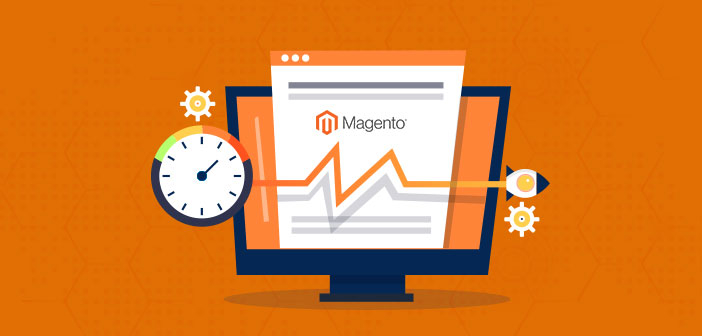In recent years, mobile commerce has emerged as the next big thing. With the rise of smartphones and internet penetration throughout the world, an increasing number of people are interested in buying on their phones. Mobile commerce accounts for more than half of all online purchasing in the United States, making it a hugely profitable channel for online retailers. According to data, mobile commerce is predicted to account for up to 54 percent of all internet buying by the end of 2021. One of the reasons why more and more online merchants are racing into the realm of mobile commerce is this.
Magento is one of the most popular eCommerce web development systems in the world, with hundreds of thousands of shops using it. The platform is now used by some of the largest industrial companies. Magento adds strong features and flexible functions to online businesses, allowing them to construct highly customizable and dynamic web stores that meet and surpass consumer expectations. The platform is particularly popular because of its powerful capabilities that allow developers to optimize Magento stores for both search engines and people. Despite all of its strong capabilities, Magento occasionally fails to satisfy mobile performance expectations. Slow mobile performance for Magento 2 stores has a negative impact on online store performance and conversion rates. Customers aren’t ready to buy from shops that provide a bad user experience with slow-loading pages. As a result, if your Magento 2 mobile website isn’t optimized, you’re going to lose a lot of money.
Fortunately, a variety of Magento optimization services can assist Magento shops to enhance their mobile performance. We’ll look at a variety of strategies and approaches for optimizing mobile performance for Magento 2 stores in this article. But first, let’s look at why you should improve page performance for your Magento 2 online business.
The importance of speed optimization

Users are increasingly seeking firms that provide excellent user experiences as mobile commerce grows. Indeed, with Google’s mobile-first index, Magento 2 store owners must improve their stores’ performance for mobile devices, or risk having their search engine rankings lowered.
Magento 2 speed optimization’s ultimate objective is to improve the user experience. You must assure consumer happiness across all devices, especially mobile devices, in the face of fierce competition in the mobile commerce market. Slow-loading sites are more likely to irritate consumers from the start, resulting in higher bounce rates and poorer conversion rates for your shop. Alternatively, you may provide a better user experience and enhance your chances of making sales by using fast-loading websites.
Why Mobile Speed Optimization is also important?
Conversion rates are heavily influenced by the user experience and website performance. According to much research, faster-loading websites retain a better conversion rate than slower-loading websites. Simply said, if your Magento 2 mobile performance is improved, you’ll be more likely to attract and convert users with focused activities.
Now, if you’re wondering what the ideal loading time for a web page is, here’s a brief rundown.
According to statistics, over half of visitors anticipate a webpage to load in two seconds or less. While all of the aforementioned statistics may appear little, they have a significant influence on the total income production of online retailers. For example, if an eCommerce business with a yearly sales of USD 10 million reduces its load time by only 1 second, it may boost revenue by 20% (USD 200,000). This is one of the reasons why many eCommerce businesses engage Magento 2 development firms to boost their store’s speed and conversion rates.
Pieces of advice on how to increase mobile speed

Now that we’ve gone over the important reasons for improving Magneto 2 mobile performance, let’s move on to some useful suggestions for improving Magneto 2 mobile speed.
Prioritize loading
If you’re unfamiliar with the term “above-the-fold content,” it refers to the portion of a website that visitors view right away when they arrive (before scrolling down). It’s critical to get this content (part) to load quickly because it’ll be the first thing customers view.
Here’s how you can make it happen:
Postpone the JavaScript parsing
Simply put, deferring JavaScript parsing implies deferring the execution and loading of JavaScript code. This aids in the loading of the above-the-fold area of the screen more quickly.
You may easily utilize different Magento 2 extensions to relocate all JS to the bottom of the page to delay the execution of JavaScript.
Critical CSS files have to be loaded first
The above-the-fold information is rendered using critical CSS, which is generally only a tiny part of the overall CSS of the site. However, to improve mobile performance, it’s best to separate the important CSS and load it first, which will then render the viewable content faster. Online shops may use Magento integration services to automatically identify essential CSS for simpler mobile performance optimization.
It’s also a good idea to create distinct essential CSS for different pages, such as the homepage, product pages, and checkout pages.
Make pages lighter
Mobile networks often have slower data speeds than desktop broadband connections. This implies that optimizing pages for improved speed is even more critical for Magento 2 mobile sites. Simply said, the smaller the page size, the faster the website will load.
Here’s how to make your Magento 2 website pages lighter for mobile optimization.
Use Gzip Compression
Gzip is a fantastic technical technique that may reduce the size of a webpage by up to 70% in online retailers. Font scripts, CSS, JavaScript, and other external scripts may all be compressed using this program. You may contact your hosting support staff for additional information regarding Gzip technology for your Magento 2 shop, which should not take long to set up.
Minification
Magento 2 has a JS/CSS minification function, which is a wonderful tool to use for mobile performance optimization. If you use Magento 2’s “Developer” mode, you may activate minification. If you don’t know much about technology, hire a professional Magento 2 Development Company to assist you out. They’ll be able to get it done in no time.
Optimize Images

Hundreds of high-quality product pictures are necessary for eCommerce shops. While these pictures are important to attract and convert readers, they can considerably increase the page’s size, resulting in longer loading times. As a result, it’s critical to optimize and compress all pictures used on the website to get the smallest feasible file size.
Various Magento extensions might assist you in compressing pictures. Additionally, most Content Delivery Networks (CDNs) enable image compression, so you may sign up for one for a little fee.
Use HTTP/2
The newest version of the hypertext protocol is HTTP/2. The protocol is designed to improve online surfing security and performance.
Magento 2 is fully compatible with HTTP version 2 and just has two requirements:
All web pages have SSL integration.
HTTP version 2 server support
For assistance and setting HTTP/2 for your Magento 2 mobile store, contact the hosting support.
JS bundling is not what you need
JavaScript files can be included in Magento 2. The JavaScript packaged files may become too large (5MB – 13MB), causing performance issues, particularly on sluggish mobile networks.
As a result, “Disable” the JS bundling option for your Magneto 2 shop is critical.
Optimize Time to First Byte (TTFB)
The time it takes for the browser to receive a response from the site’s server is referred to as the Time to First Byte (TTFB). The TTFC wait time should be under 500 MS for optimal web page performance.
Magento 2’s full-page caching feature allows the platform to reduce service response time when a page is viewed many times. However, certain sites, such as checkout pages, cannot be properly cached, resulting in sluggish response times. As a result, optimizing TTFB for improved website speed is critical.
Upgrading the hosting plan is the simplest approach to enhance the TTFB. This is because, in many cases, hosting server power is insufficient to handle a large Magento 2 eCommerce shop properly. Alternatively, you may need more CPU and RAM to improve the TTFB responsiveness.
Installing a fresh copy of Magento 2 (same version) on the same server and comparing it to the live site is a simple way to check for server suitability. If the fresh copy performs better than the live site, the hosting server may need to be upgraded.
Conclusion
Now, you know not only why it’s important to optimize your website but also how to do it. In the end, we want to offer you a solution that will suit you the most. To not waste money and time on specialists or something like this, you can install the Google Page Speed Optimizer extension designed by Mirasvit that is capable of handling all this process. Besides, this add-on is absolutely simple to use, which means you can optimize the speed rate of your website right after the installation.



